Association with the Benefice of Walsingham, Houghton & The Barshams
On 3rd February 2022 The Revd Dr Harri Williams SSC was licensed as Priest-in-Charge of the Parish of Hempton with Pudding Norton.
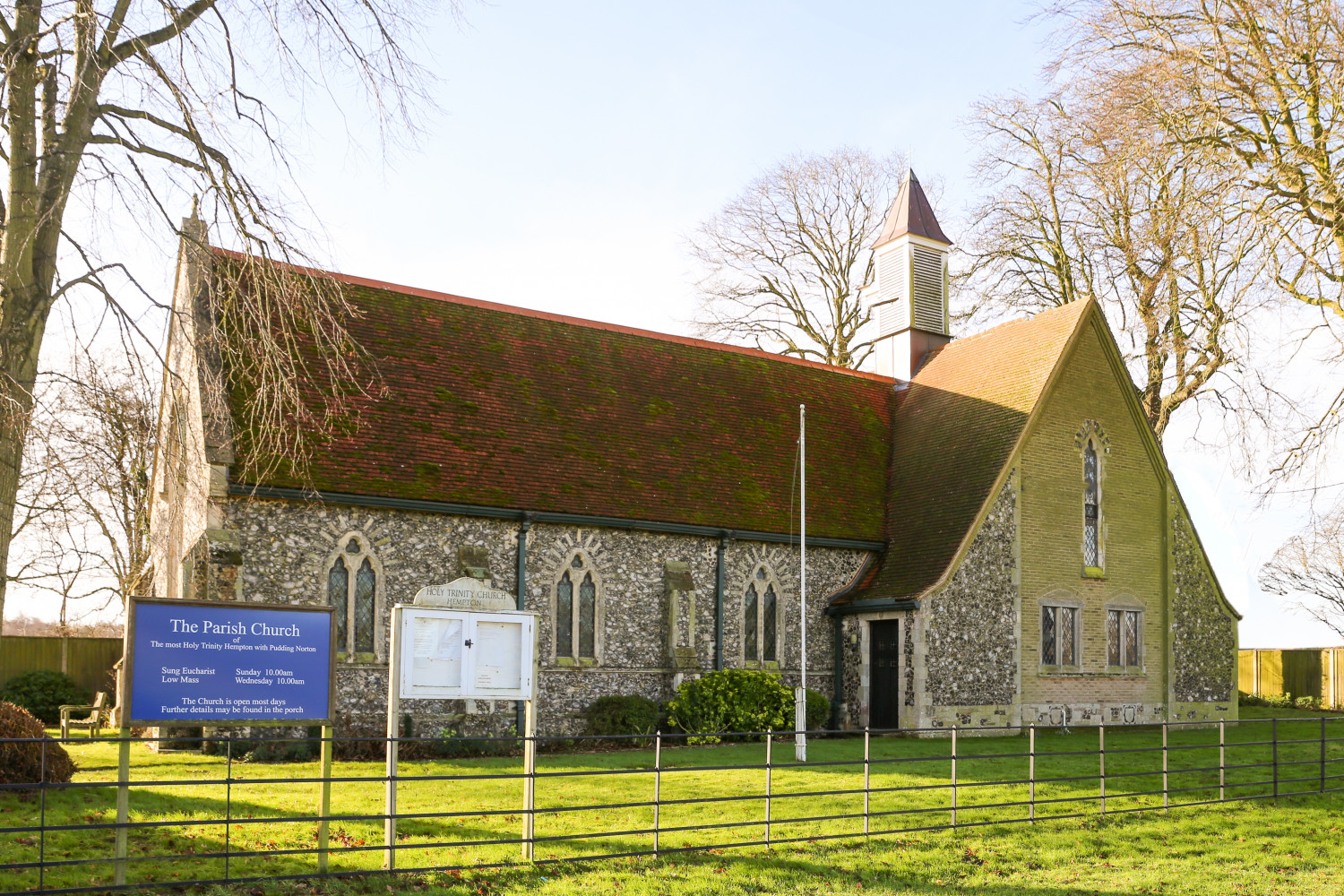
The History of Hempton Church
by
John H Davies 2001
including material provided by the late Mr A Palmer of Hempton
This history of Hempton Church is written to illustrate how a church responds to the changing demands placed upon a building by a worshipping community and is not intended as a guide book. If a church is the product of the way in which the followers of Christ feel that they can best worship and make communal thanksgiving to God, the building will reflect changes in how this has been interpreted by successive generations. What we see today is a building that has been modified by increments and to understand these changes and mutations it is necessary to investigate, and sometimes speculate upon, the motives for change.
Named for The Holy Trinity, Hempton Church has its roots and origins amidst the ruins of ecclesiastical buildings associated with S Stephen, S Andrew, S Margaret and S Michael, and indeed a history of Hempton's current church would not be complete without an understanding of these connections.
During the reign of Henry I the Hospital of S Stephen was founded at Hempton by Roger de S Martin in conjunction with Richard Ward, who afterwards became an Austin Canon and its first prior. At some time afterwards it was re-founded as a small priory, dedicated to the honour of S Stephen, for three or four canons of the Order of S Augustine. The Austin Canons were unlike the great monastic orders of the Church in that they had no common founder and no central organisation. Rather, they were groups of priests and laymen who, taking simple vows, lived a life of worship, holding all their possessions in common in order that they might strengthen each other with their fellowship. The Austin Canons had a reputation of hospitality to pilgrims and the fact that Hempton lay on the road from London to Walsingham, the great pilgrimage centre of medieval England, no doubt had much to do with the founding of the priory in the parish. The priory occupied the site of the Abbey Farm in Hempton. It was never very large and four canons was the maximum that it supported. Various returns made at different times show that Hempton Priory was always very poor compared with neighbouring houses. It seems that at times the canons worked on the land besides their own labourers and their life must have been very hard and simple.
At an early date the rectory of the church at Hempton was presented to the priory. This meant that the stipend set aside for the rector of Hempton was paid to the priory who would be responsible for finding a priest - the vicar - to minister in the church. Larger monastic houses were in the habit of paying chaplains to act as vicars in churches owned by them but, in the case of Hempton Priory, their general poverty and the absence of any references makes it seem likely that the daily services in the parish church of S Andrew would be the responsibility of one of the Canons. The list of priors indicates that they were nearly all local men. This church of S Andrew stood in what is now Church Meadow on the Shereford Road. No record remains of its appearance or its day to day history. The Norwich Taxation of 1254 gives the value of the living of Hempton annually as £3 6s 8d and the Taxation of Pope Nicholas in 1291 shows the same figure.
On 22nd November 1534 the newly appointed prior, Henry Salter, and the three canons signed their acknowledgement of the King's supremacy but this was not sufficient to save the priory. It was included in a 1536 list of Norfolk's lesser monasteries for immediate suppression. On 11th August 1536 Sir Roger Townsend, Sir William Paston, Richard Southwell and Thomas Mildmay, the King's Commissioners, visited the priory and drew up an inventory of goods which were to be kept by the prior for the King's use until further orders. This inventory is pathetic reading; it shows the poverty of the house and dispels at once any illusions of monastic wealth and luxury as far as Hempton Priory was concerned.
The High Altar had:
- two old altar cloths not worn
- 4 little candle sticks of latten
- an old cross with a foot of copper
- 2 little cruets of pewter
- an old hanging of red and green silk hanging before the altar, not worn
- 2 old corporasse cases nothing worth
- 6 old books of their service nothing worth
- a little sacring bell
At Our Lady's Altar:
- an old table of alabaster
- 2 old altar cloths of linen
- an old vestment
- an old painted cloth before the altar worn and nothing worth
In most parishes the dissolution of the local monastery had grave economic and social consequences, but these in the course of time adjusted themselves. In Hempton, however, the dissolution of the priory led directly to the disappearance of the parish church.
In 1537, two months after the sale of the priory property, Francis Bedingfield of London was granted a lease of the priory site and demesne lands. In 1546 the site of the priory, with the manor and advowson of the church, was granted to Sir William Fermor and Catherine his wife. In such cases it was usual for the new owner to keep the "Great Tithes" for his own use and set aside the "Lesser Tithes" for the stipend of a vicar. In the case of Hempton this was not done. It may have been that it was considered that Fakenham church was near enough for the parishioners, or it may have been exceptional greed on the part of the new owners. As the Fermors, who lived at East Barsham Manor, seem to have been typical Tudor adventurers, unscrupulous and avaricious, the last possibility seems reasonable. With no vicar there could be no services and in consequence the church gradually fell into ruin. It is not possible to ascertain the exact date at which S Andrew's church became unusable but in the 1552 Inventories of Church Goods required from all churches in Norfolk the two churchwardens, Thomas Ffowle and Willm Bull had sold off most of the churches ornaments with lhe intention of using the money to repair the church. By 1555 there is evidence that the church was no longer used as a parishioner, Robert Banks, who had been charged before the Bishop's Court at Norwich with bigamy, was ordered to do penance in his parish church but actually did so in Norwich Market Place. A county directory published in 1845 stated that "The parishioners have seats in Fakenham church, for which privilege they pay 18s a year to the churchwardens".
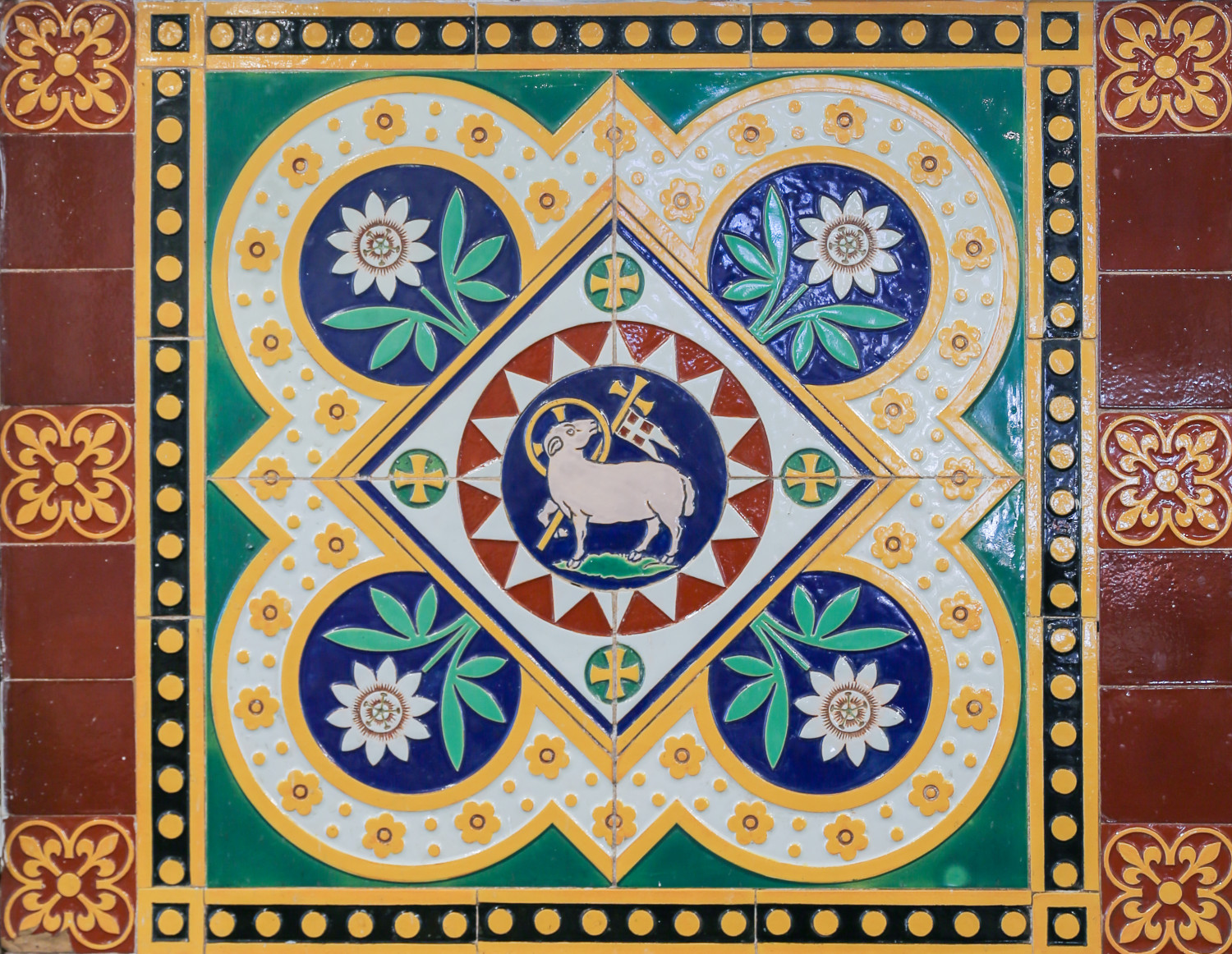 |
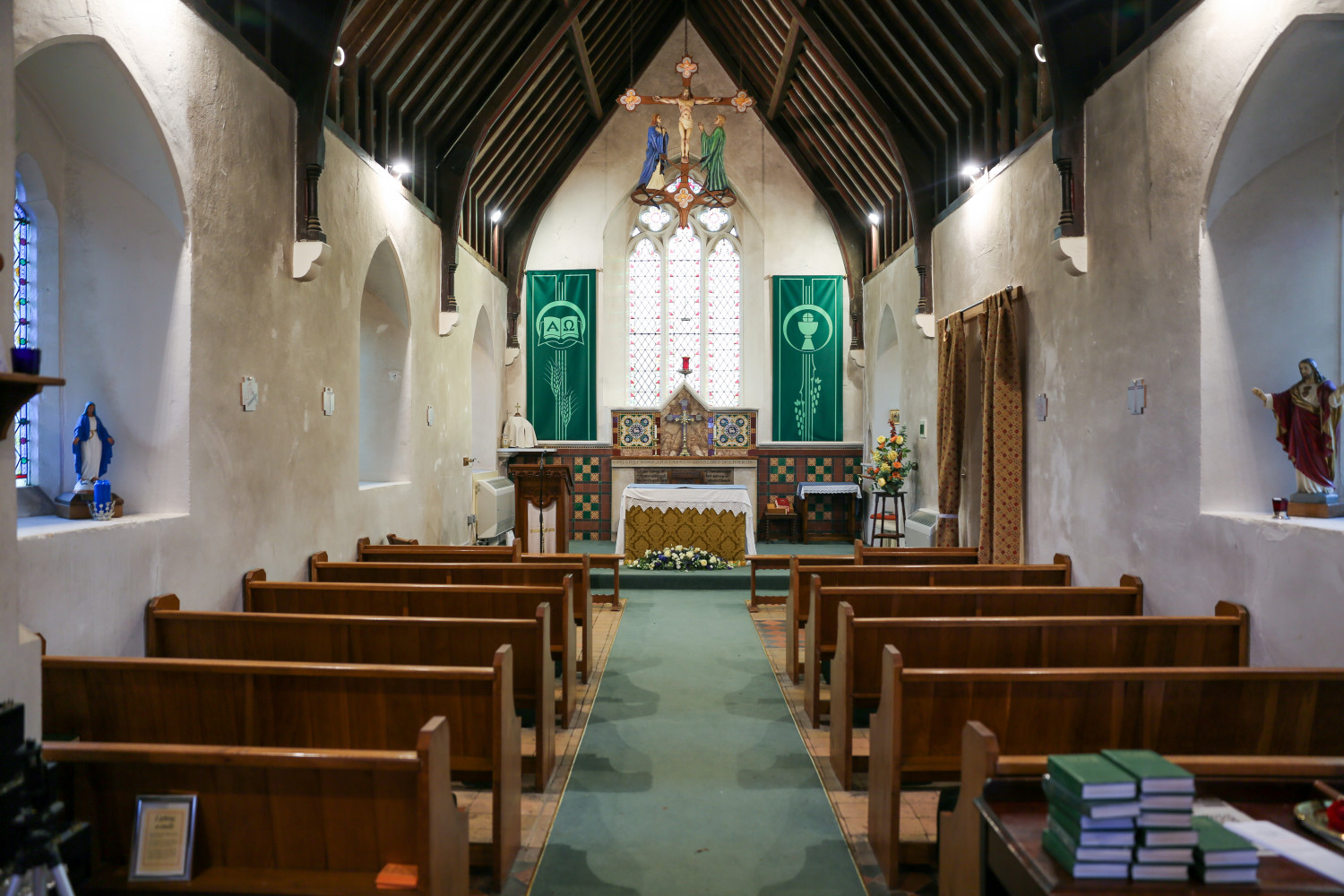 |
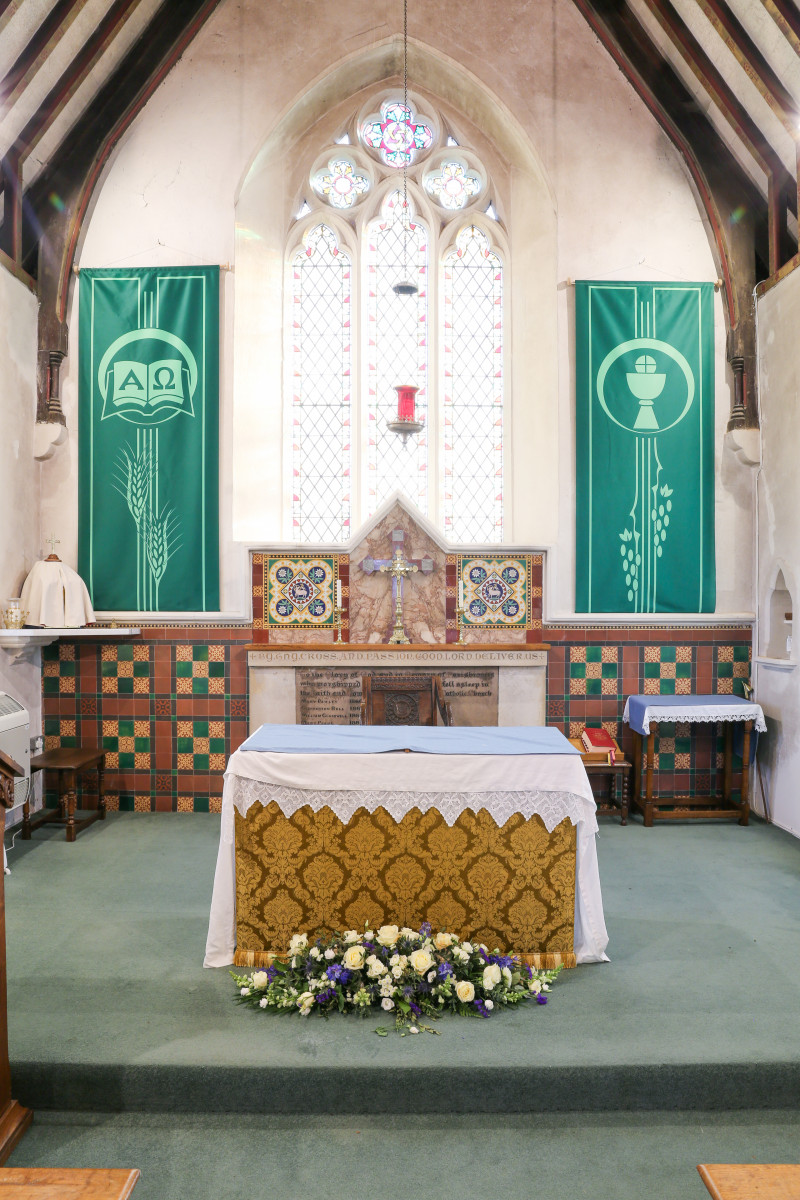 |
It was not until the nineteenth century that Hempton was to come into its own again. In 1833 John Keeble had preached his famous sermon on "National Apostasy" before the University of Oxford. This sermon is usually regarded as the start of what is known as the "Oxford Movement" - the great movement of renewed Church life and a return to Church principles. Inspired by this movement, many of the clergy, in spite of fierce opposition, and even persecution and violence, began calling upon the Church of England to shake off the torpor under which it had slumbered during the Hanoverian regime and to assert itself as a living part of Christ's Catholic Church.
One of the clergy who was zealous for this great movement of church awakening was the Reverend Charles St Denys Moxon, who was assistant priest at Fakenham. (Emmanuel College, Cambridge, LLB 1st Class Law Tripos, 1850). Ordained in 1850 as deacon, and raised to the priesthood the following year by the Bishop of Norwich, Dr Samuel Hinds, he was enthusiastic in the cause of education and of bettering the condition of the working man. The local newspapers of the time contain frequent letters from him advocating the setting-up of local public libraries, and reports of lectures by him on a variety of topics at the Working Men's Institute. He lived at the Grove, Hempton, and there he conceived the idea of giving Hempton once more a church of its own.
Accordingly, he obtained a grant of a piece of land on Hempton Green from the Lord of the Manor, the fourth Marquess Townshend, and at his own expense, aided by a few personal friends, and a grant of £80 from the Incorporated Church Building Society (The Society also gave £100 for the extension in 1954) he erected there the Church of the Holy Trinity. The architect was John Henry Hakewell (1811-1880) who was consulting architect to the Church Building Society. He had been responsible for the large restoration of S Nicholas Church, Gt Yarmouth in 1847, which included the opening of the north isles at a cost of £6,000. He was also responsible for Bury St Edmunds Hospital and Stowlangtoft Hall, Suffolk.
The church was built in what was considered a correct style for churches. In an effort to get away from the preaching house style of church which had been erected in Hanoverian times, the church builders of the Oxford Movement based their designs as closely as they could upon medieval precedents. Accordingly, this little church, although it was only intended to serve as the chancel of a larger church to be completed later, was fitted up with all the adjuncts of a complete church, including a screen. The roof of the chancel portion of the building was more elaborately decorated than the rest of the roof.
The founder made no secret of his intentions and aims for the church. In a list of articles given to the church, such as chalice and paten, alms dish, candle sticks, sanctuary lamp, processional cross, etc, he wrote: "As founder of the Church of the Holy Trinity in the Parish of Hempton and of the Parsonage House and School Building connected with the same, I have to record the help of many members of my own family and of many personal friends as well as neighbours. I also desire to leave it upon record that it has been and is my earnest wish to have the Worship of Almighty God within its walls conducted with every adjunct of Ritual which can add dignity and solemnity to the services. Structural arrangements, as far as space allowed, have been made with that object in view, and at my own cost have dedicated to God a Reredos as a memorial of deceased communicants."
In a document dated 1868 Father Moxon he wrote that the church had been erected ''... to be for ever devoted to the Worship of the Ever Blessed Trinity, according to the forms, Creeds and Rubrics of the Catholic Church as established in England at the foundation of the said new church, and accordingly to the Ritual not only in use but allowed by the same under the Rubric 'Such ornaments of the Church and of the Ministers thereof at all times of their ministrations, shall be retained and be in use, as it were in the Church of England by authority of Parliament the second year of the reign of King Edward the Sixth'."
The opening ceremony took place on Monday, 6th October, 1856. A local newspaper thus reported the occasion:
Hempton's New Church
The chancel of this church having been completed and licensed far divine worship by the Bishop of the Diocese, the opening services were held on Monday last. The clergy and choir formed a procession, headed by the builders and churchwarden, and the license having been read at the church gate, entered the enclosure singing the doxology.
Each service commenced with an introit, composed by Mr Gaul, the organist of Fakenham church, which was beautifully sung by the choir, and the following clergy took part - The prayers were read by the Rev A B Hemsworth, the lessons ry W A Chapman; the Communion service by the Rev James Lee Warner and the Rev M A Atkinson; Mr Lee Warner preaching the sermon from Isaiah 1vi. 6,7,8. The Hofy Communion was afterwards administered.
The afternoon service was held at three o'clock, the prayers being read by Rev K H Digby and the Rev Septimus Lee Warner; the lessons by the Revs J H Hopper and H T Lee, the sermon being preached by the Rev M A Atkinson, rector of Fakenham, from John vi. 5.
An evening service was held later in the day, the Revs Gilbert and J R Hopper reading the prayers, the Revs G B Moxon and H Goggs the lessons, and the Rev C St Denys Moxon, the incumbent of the church, preaching the sermon from Acts ii. 42.
The Building was crowded at all the services, and a very large number of the poorer classes could not obtain the admission which they sought at the evening service. The collections amounted to rather more than £30, a sum which leaves but a small debt upon the building.
The warmest feelings prevailed and most cordial sympathy was shown on the occasion when, for the first time after a lapse of nearly 350 years, the sound of the church bell was heard again in this long neglected parish ...
Father Moxon continued as Vicar of Hempton until 1874 when he left the district and settled at Hatherleigh in Devon.
The present vicarage house was built in 1858 on a further piece of land given to the church by the Marquess Townshend. The present Church Room was used as a Day School for many years.
In 1880 (6th August) the Lynn and Fakenham Railway was finished and opened to traffic. The terminus was on the site of what was to become Fakenham (West) station, which lies in the parish of Hempton, and The Grove, the home of Father Moxon, became the resident of the Superintendent. This railway was eventually extended to Melton Constable giving a direct access from the Midlands to Yarmouth, Lowestoft, Cromer, Sheringham and Norwich. It was dismantled in 1959.
In 1921 the Shrine of Our Lady at Walsingham was again set up, and the vicar of Hempton of the time, the Rev George Smallpeice, was one of the small group of priests who were present at the inauguration of the shrine in the parish church at Walsingham. Once more, after a lapse of centuries, pilgrims again made their way through Hempton to Walsingham. They did not come on horseback, but in cars and motor-coaches, although a few still came on foot. But they came, as did their medieval forefathers, to do honour to that Mystery whereby "the Word was made flesh, and dwelt among us".
Although the Church of the Holy Trinity had been licensed by the Bishop of Norwich from its opening, it had never been formally consecrated (presumably because it was expected that its completion would follow in a few years time) and in 1929 it was decided to repair the omission, and on Sunday 7th July Dr Bertram Pollock, the then Bishop of Norwich, visited the church and performed the consecration ceremonies.
It would appear that at some time between the two World Wars changes were made to the interior of the church. Evidence exists that a riddel was erected behind the altar and that wings were added to the wooden altar itself. Both of these additions are in keeping with the ideals of the Gothic Revival Movement and possibly reflect an interest in liturgical re-ordering by the vicar, George Smallpeice. It is interesting to note that the original design of the sanctuary followed Roman practice of the day in that the altar was narrow in width to emphasise its height and was backed by a fairly plain reredos. The changes introduced later followed guidelines published and promoted by the Warham Guild during a period when emphasis was placed on the grandness of the altar.
In the post-war years, the population of Hempton grew considerably due to a large number of council houses being built on the Swaffham Road, and also because the Prisoner-of-War camp, previously managed by the Ministry of Works and housing 1,700 men, was converted into a mobile-home park. Quite early in the incumbency of Rev R J Leavey, appointed in 1949, it became obvious that the church was now inadequate for the normal Sunday congregations, especially at the Sung Eucharist. The problem of seating became acute, and in 1952 the Parochial Church Council unanimously decided to proceed with the
extension of the church. Plans were drawn up by Mr J P Chaplin of Norwich and a Faculty obtained from the Consistory Court. A Hempton Church Centenary Fund was opened with a generous donation of £1,500 and the parish went to work with a will to raise the necessary money. In all, the total cost of the church extension, with heating and lighting and furniture, including a new organ, amounted to £4,700. Work was begun by the contractors, Messrs Westgate and Sons of Norwich, late in 1954 and by the end of October the next year it was ready for consecration.
Stones and dressed flints from the bombed church of S Michael-at-Thorn in the city of Norwich were purchased from the diocesan authorities. Also worked into the building were flints from the foundations of the medieval church of S Andrew, Hempton, and stones from the ruined church of S Margaret, Pudding Norton. Tiles and a bell from the disused church at Oxwick were given by the parishioners of Colkirk, and by one of the ironies of history, a gift was made of floor tiles from the ruined manor-house of the Cliftons at Toftrees - the Clifton family having purchased the priory properties in 1572, and thus bore some of the responsibility of allowing S Andrew's Church to fall into ruin by neglecting to provide a stipend for a vicar. Every parish in the Brisley deanery made some gift to the work - benches from Tittleshall and Raynham, a tabernacle from
Ryburgh, a bookcase from Whissonsett, the bell and tiles from Colkirk-with-Oxwick. A stone altar was set up in the south isle of the new extension, and to perpetuate the dedication of S Michael-at-Thorn, Norwich, this is known as S Michael's altar. The base of this altar is made from pinnacles from the tower of S Michael's, the upright piers came from the little bell turret which formerly stood at the west end of Hempton Church; the centre piece was part of the tracery of one of the windows of S Margaret's, Pudding Norton, and the mensa came from S Michael-at-Thorn.
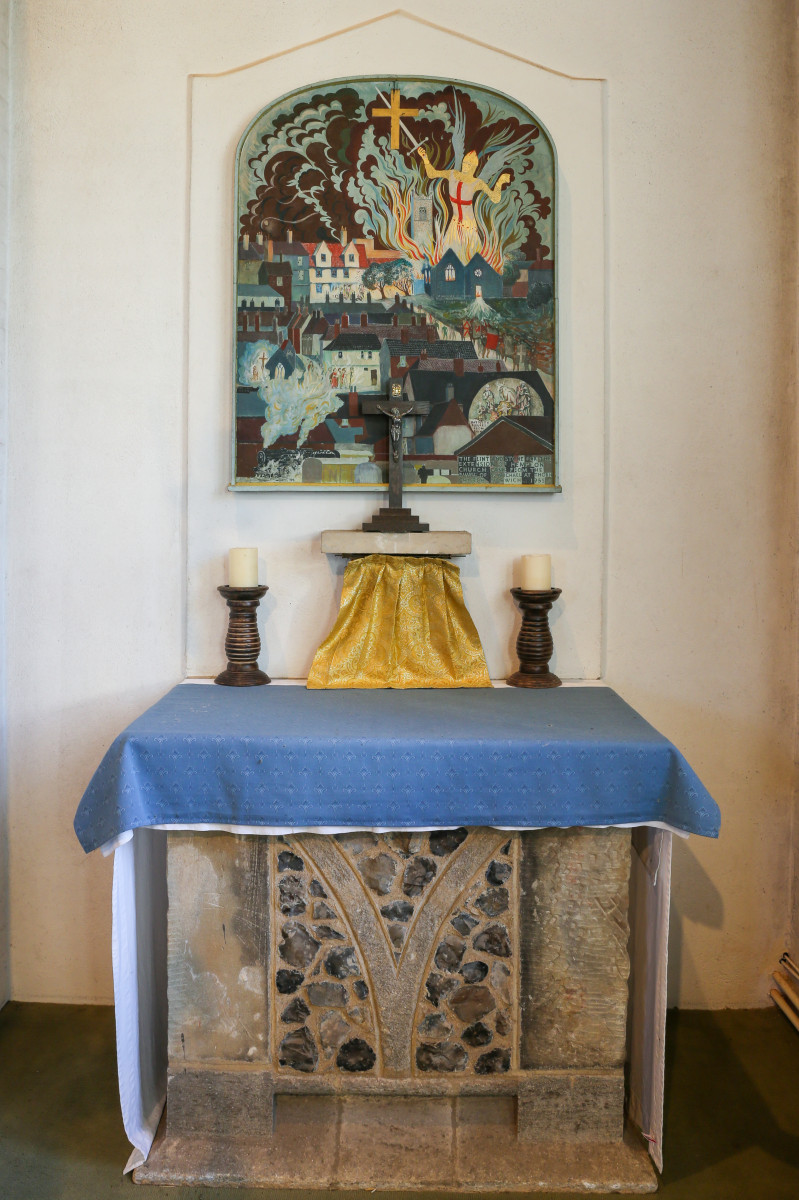 |
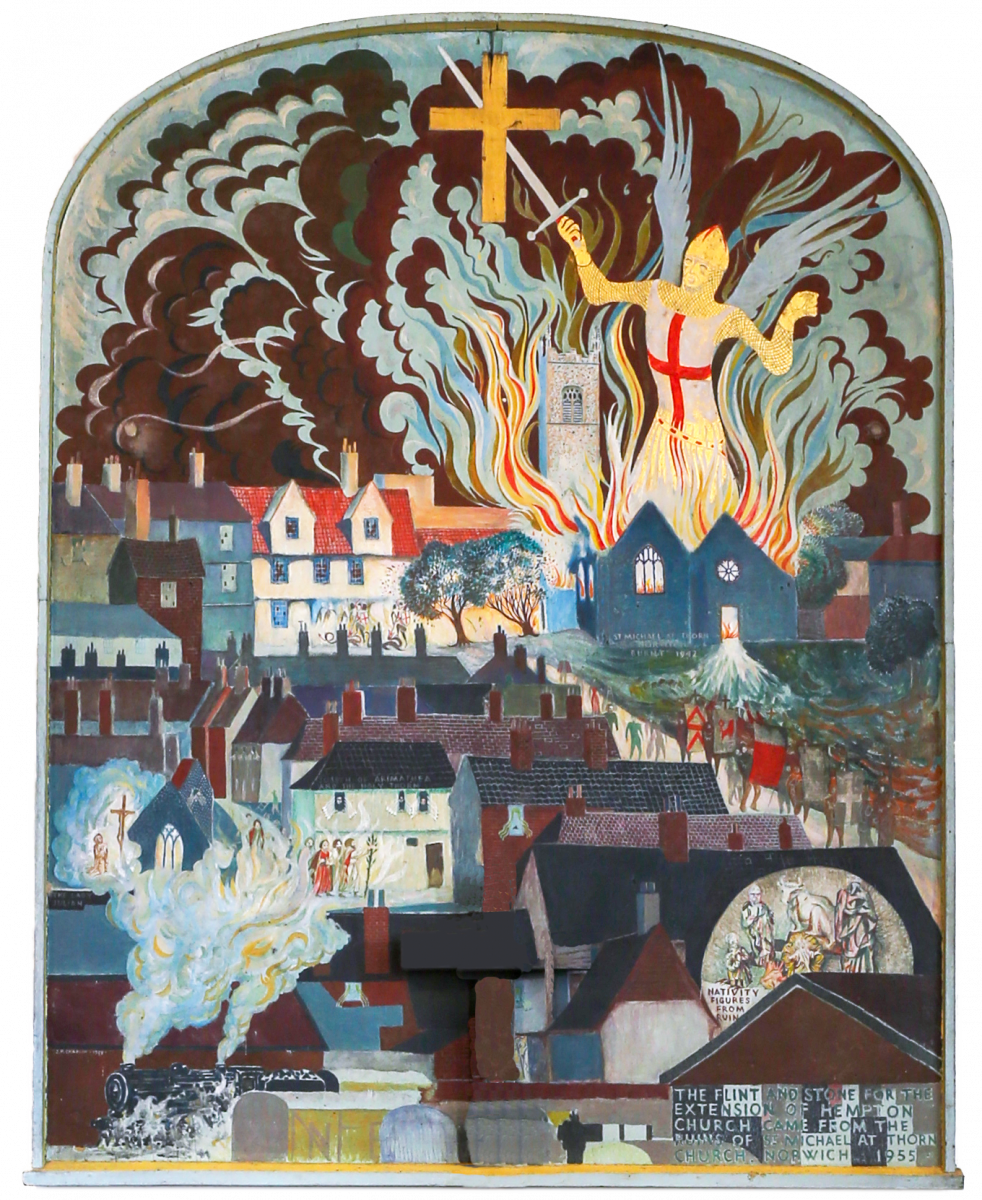 |
The architect, Mr Chaplin, executed and presented a painting which forms the reredos for this altar. Painted on what was the old notice-board of S Michael's, it shows a view of that parish from Thorpe, Norwich, with the railway in the foreground and the church in flames with S Michael the Archangel emerging from the flames. On the left is shown the restored church of S Julian, with the figure of Julian of Norwich, England's greatest mystic. Mr Chaplin also worked and gave the carved wooden figures of S Andrew and S Stephen which are affixed to the doors of the extension. A parishioner gave the picture of the Holy Family which hung in the baptistery for many years and, since the re-siting of the font, has been moved into the main body of the extended nave. Each new window was given by individual members of the congregation; the heraldic designs in each window symbolise the Holy Trinity, S Michael, S Stephen and S Margaret.
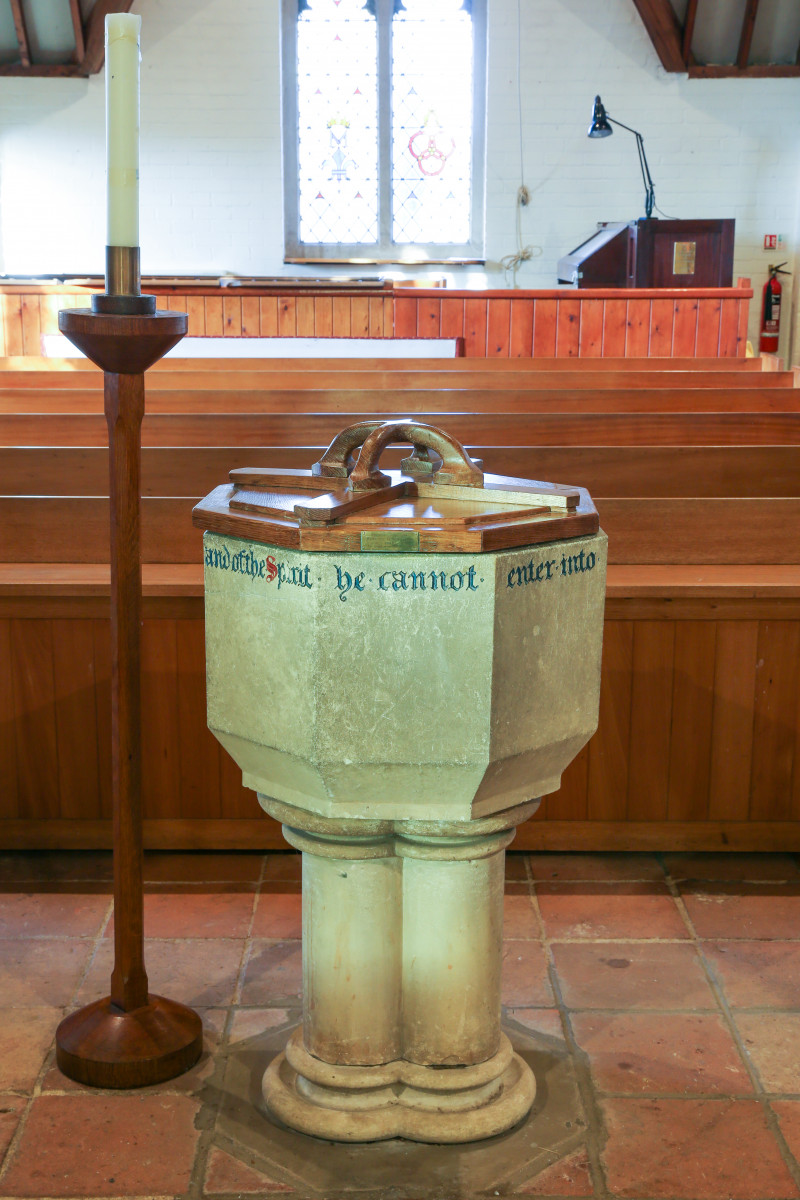
At the same time individual gifts of an altar crucifix, silver candlesticks, altar frontals and linen, vestments, etc were given by members of the congregation. There was not a house in the parish that did not share in the work of raising funds to pay for the work. Many took boxes and gave regularly, others gave donations and all supported the various money-raising efforts made which included fetes, sales of work, concerts, dances and the annual gymkhana. Over eight tons of newspapers and periodicals were carried to the vicarage, to be sold as waste-paper, bringing in over £40. In every way this Centenary Fund became the responsibility of the whole parish. The parishioners of Hempton, who in the sixteenth century had lost their ancient church through greed or apathy, were in the present century atoning with their generosity for the shortcomings of their predecessors.
At half-past ten on Sunday 23rd October 1955, the Bishop of Norwich, the sixty-sixth of that line, and successor in office of St Felix "who brought us baptism" standing with his attendants before the new south door, was invited by the vicar to dedicate the new work, wilh the words:
"Right Reverend Father in God, we pray you to dedicate to Almighty God the Extension to the Parish Church of Hempton, new built to the Glory of God."
Signifying his willingness, the Bishop knocked with his pastoral staff on the new door. It was opened from within, and he was handed the keys of the church by the architect. He entered the crowded extension with the salutation, "Peace be to this house" to which the people made reply, "At thine incoming". He made his way to the altar in the old part of the church, now at last the High Altar of the completed church. The Vicar and his servers followed him, and the churchwardens of Hempton, Toftrees and Shereford, together with the 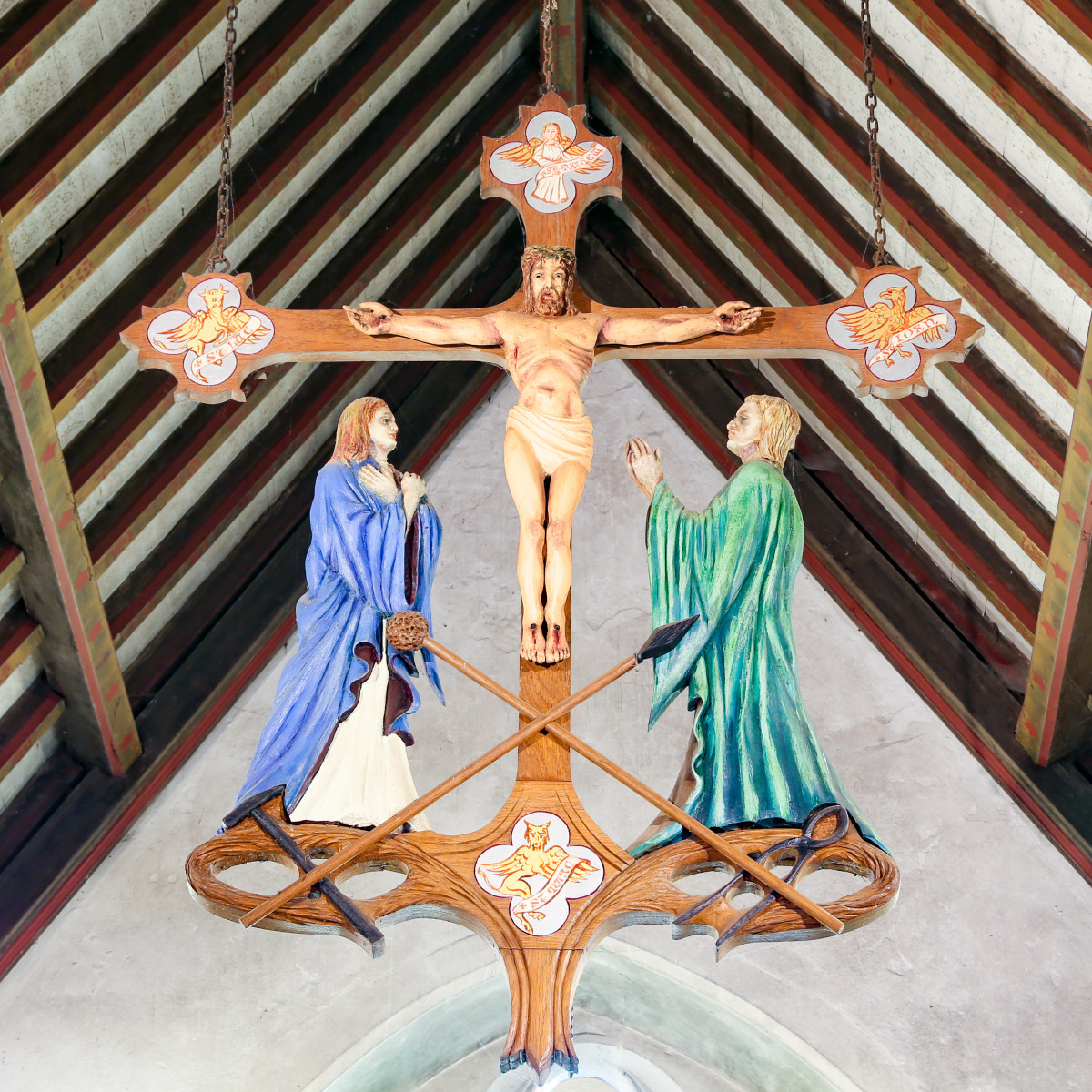 architect, the builder, the Lord of the Manor (the Marquess Townshend, whose great-grandfather had given the land on which the church was built) and two neighbouring priests.
architect, the builder, the Lord of the Manor (the Marquess Townshend, whose great-grandfather had given the land on which the church was built) and two neighbouring priests.
The Bishop then laid the keys on the altar, and after the rest of the procession had reached their places, returned to the extension, which he solemnly dedicated. He then consecrated the new altar of S Michael, and then returning to the sanctuary, also dedicated the very fine hanging rood, newly presented to the church in memory of Norah Smallpeice, wife of the previous vicar of Hempton, by her children, who were present. The rood had been carved during the war by a Ukrainian prisoner residing in the POW camp.
The history of Holy Trinity remained relatively unchanged for the remainder of the twentieth century apart from its growth as a gathered community church as it became a magnet for those wishing to worship, in the Anglo-Catholic tradition. The church was fulfiling the original dream of Father Moxon.
At the beginning of the new millennium minor changes were introduced to cope with modern liturgical requirements and the High Altar was re-sited to allow the presiding priest to face west. Subsequent redecoration of the interior, with a new carpet for the Nave and Sanctuary have added to the impression, commented upon by visitors, that much love and care are bestowed upon Holy Trinity church. Once again the living church of Christ in Hempton responded to the worshipping needs of the community.
The year 2006 is the 150th anniversary of the foundation of Holy Trinity and the restoration of public worship in the parish. There is much to celebrate as, despite the problems and uncertainties facing the Church of England, the worshipping community seeks to remain steadfast and loyal to its roots and traditions. Holy Trinity Church can be thought of as a sermon - a sermon of stone speaking to every passer - by of truths and values which are timeless and relevant in every age. These are the foundations of a well-ordered and just society. To assemble, praise and worship Almighty God is the fundamental duty of every person. May he he truly glorified, and honour given to his holy name throughout the ages to come.
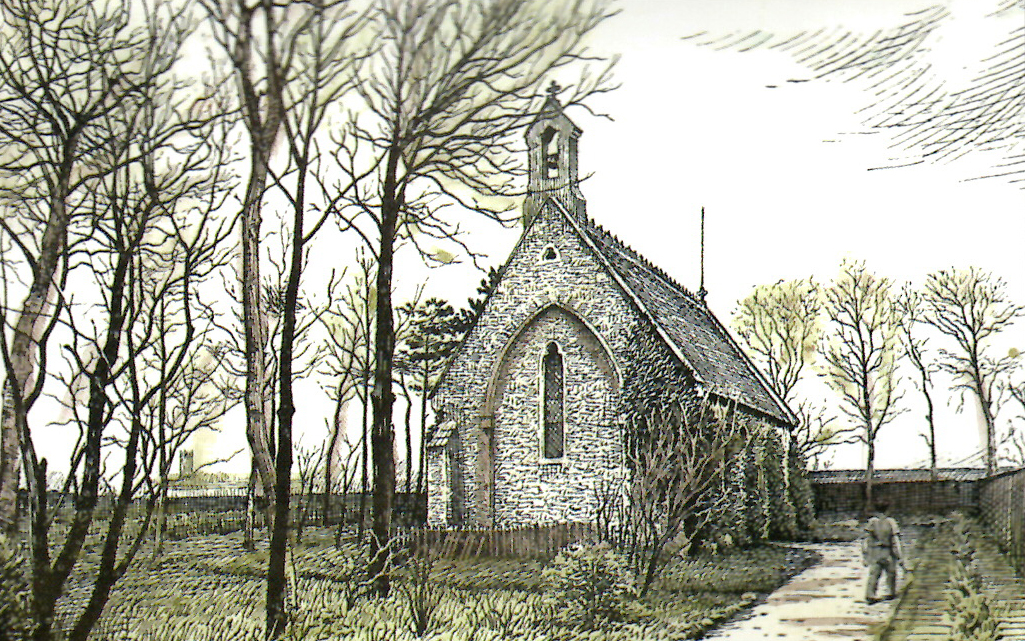
| Vicars of Holy Trinity, Hempton | |
| Rev C St Denys Moxon | 1856-1874 |
| Rev A E Johnson | 1874-1887 |
| Rev A E Humphries | 1887-1895 |
| Rev S L Coverley | 1895-1905 |
| Rev G Smallpeice | 1906-1949 |
| Rev R J Leavey | 1949-1959 |
| Rev H D Robin | 1960-1965 |
| Rev S M Bamforth | 1967-1971 |
| Rev R N Stranack | 1972-1981 |
| Rev H N Annis | 1982-1984 |
| Rev H Jalland | 1986-1990 |
| Rev F E Tester | 1991-1994 |
| Rev M D Smith | 1994-1995 |
| Rev M C Warner | 1998-2000 |
| Rev P F Keeling | 2000-2005 |
| Rev P J North | 2005- |
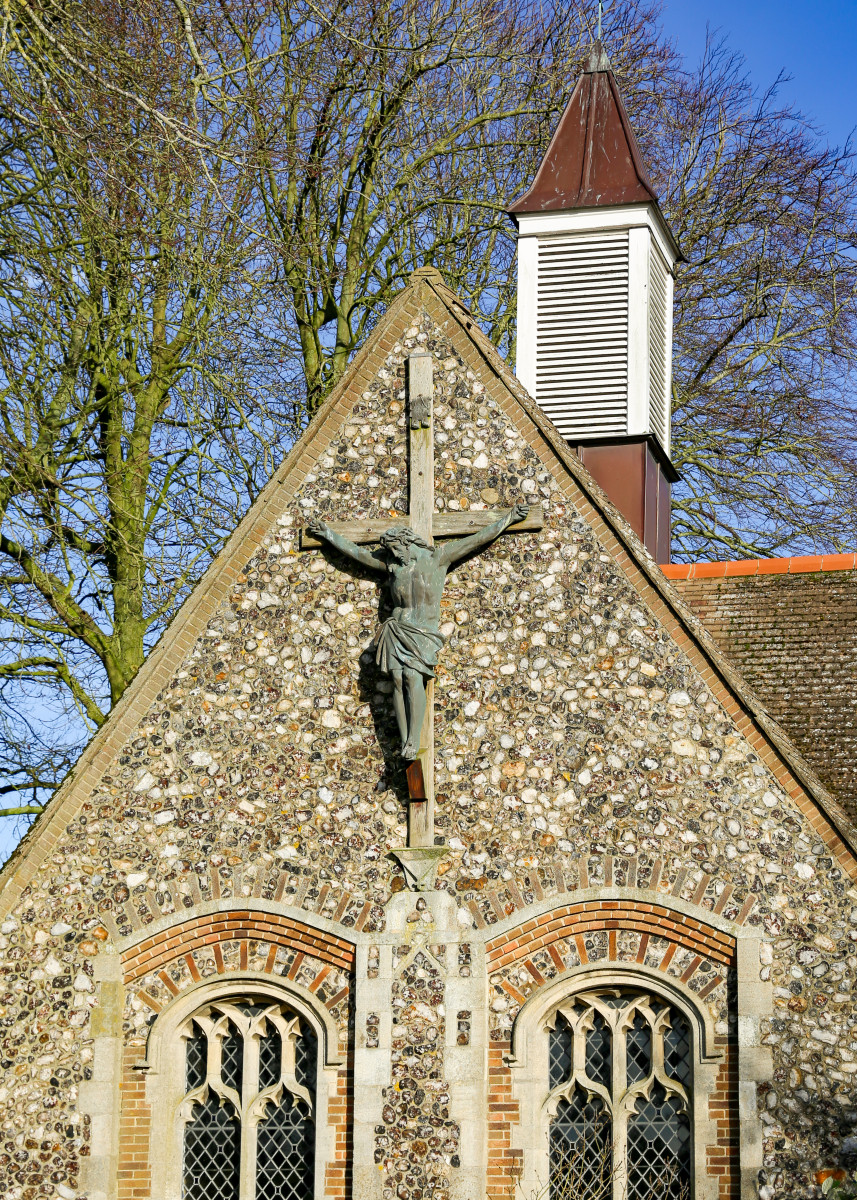 |